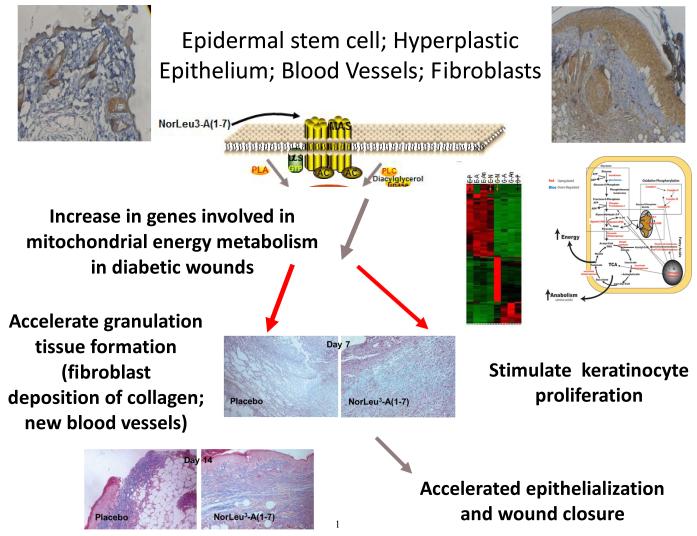Figure 2.
This is a cartoon summarizing the current hypothesis regarding the mechanisms by which NorLeu3-A(1-7) accelerates healing of diabetic wounds. With injury, expression of the receptor for NorLeu3-A(1-7), Mas, increases in skin. The cellular components with upregulated expression include cells of the hair follicle, hyperplastic epidermis and dermis [18]. Unpublished studies using microarray technology show that a cassette of genes is upregulated in granulation tissue of wounds treated with NorLeu3-A(1-7) (compare first lane from the right [G-P; granulation-placebo] with the fourth lane from the right [G-N; granulation-NorLeu3-A(1-7)]. Analysis of the genes upregulated indicated a normalization of energy metabolism in the treated granulation tissue (schema next to microarray). These changes may contribute to the accelerated formation of new blood vessels and granulation tissue (day 7 photomicrograph) and re-epithelialization (day 14 photomicrograph).

